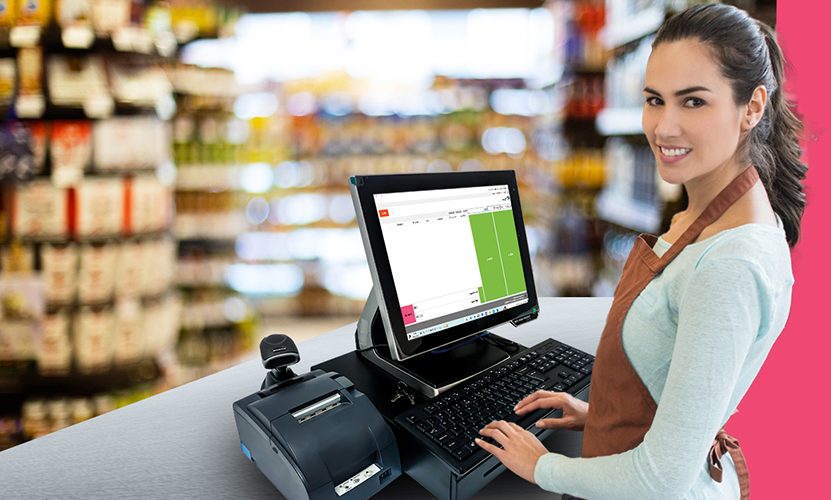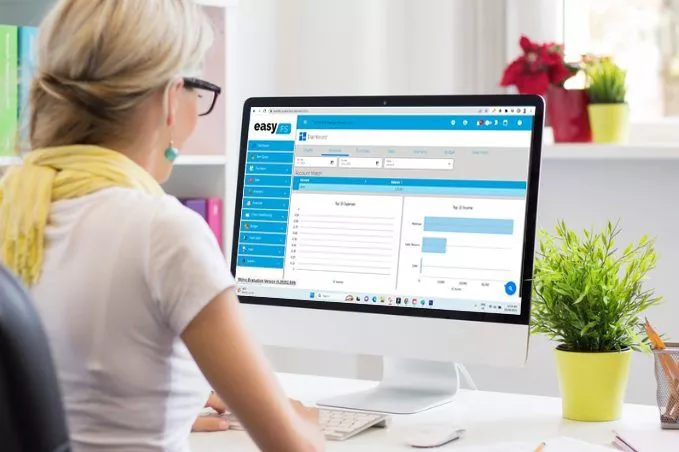2025/11/11
Accounting mistakes and bloated manpower often have the same root cause: disconnected systems. When point-of-sale, inventory, payroll, and finance are handled by separate tools that don’t communicate, teams end up spending more time reconciling data than actually understanding it. Integrating these systems changes the story. It connects every piece of the business puzzle, helping companies cut down on human error, streamline their processes, and save both time and money. Let’s dive deeper into how integration makes this possible — and how EasySeries products make it effortless.
The Cost of Disconnected Systems
Many small and medium-sized businesses juggle multiple software tools — one for sales, another for inventory, another for payroll, and still another for accounting. On paper, it seems manageable. But in practice, these disconnected systems create constant friction. Every time data needs to move from one platform to another, someone has to manually transfer or re-enter it. One typo in a report or a misread figure during encoding can throw off the books entirely. By the time accountants finish reconciling everything, the data has aged, and management decisions are based on outdated or unreliable information.
These inefficiencies carry a heavy price. Errors lead to financial misstatements, while redundant work inflates labor costs. Employees end up doing administrative clean-up instead of focusing on analysis, forecasting, or growth strategies. Integration eliminates those weak points, replacing manual handoffs with automatic synchronization — and that’s where EasySeries stands out.
What Integration Really Means
Integration isn’t just about exporting a file from one system and importing it into another. True integration means creating a seamless, automated flow of information. Sales made through your POS instantly reflect inventory levels, cost of goods sold, and accounting ledgers without human intervention. Payments automatically link to their corresponding transactions, and stock adjustments update financial records in real time.
With this setup, you’re not just connecting data — you’re unifying your business logic. Each part of the system “speaks” to the other. EasySeries products are built precisely for this kind of cohesion. When EasyPOS, EasyFS, and EasyHQ are linked together, every sale, purchase, and adjustment travels through your ecosystem automatically. Instead of isolated systems competing for accuracy, you get a single version of the truth across your operations.
How Integration Reduces Accounting Errors
One of the most immediate benefits of integration is the dramatic reduction in accounting errors. Manual data entry — the classic source of mistakes, becomes unnecessary. For example, in a non-integrated setup, an accountant must type figures from POS reports into the ledger. A single wrong keystroke or misplaced decimal can distort financial statements. With EasySeries integration, every transaction recorded at the point of sale automatically creates the corresponding ledger entry. The human element, and therefore human error is largely removed.
Integration also ensures accurate inventory valuation and cost of goods sold (COGS). When inventory data is isolated, discrepancies often arise between stock counts and financial records. With EasySeries, the system keeps sales, receiving, and adjustments synchronized, meaning your inventory value and accounting entries always match. This consistency eliminates the need for constant reconciliation and adjustment.
Month-end closing becomes faster and more accurate too. When bank feeds, sales totals, and general ledger balances all align automatically, accountants no longer spend days chasing missing figures. Instead, they can focus on reviewing exceptions, producing reports, and analyzing trends.
Another key advantage is traceability. Integrated systems like EasySeries automatically generate audit trails. Each sale can be traced directly to its impact on inventory and accounting, reducing the risk of unexplainable discrepancies. This transparency makes life easier for both auditors and internal reviewers. Finally, integration minimizes timing differences. Sales, purchases, and payments are all recorded at the same time, preventing currency mismatches or posting delays that can lead to temporary imbalances in the books.
How Integration Saves Manpower Costs
Beyond error reduction, integration has a powerful effect on labor efficiency. Every manual reconciliation or journal entry consumes valuable staff hours. When systems are connected, the volume of reconciliations drops significantly. Teams can manage larger transaction volumes without needing additional manpower.
Automation also frees employees from repetitive tasks. Instead of spending their days typing, cross-checking, or formatting reports, finance staff can focus on more strategic work such as analyzing profitability, monitoring cash flow, or identifying cost-saving opportunities. The result is a team that’s not just smaller, but smarter and more valuable.
Unified systems also make onboarding new employees easier. Training someone on multiple software tools, each with its own process, is time-consuming and confusing. With an integrated EasySeries setup, new hires only need to learn one seamless workflow. This simplicity reduces the learning curve, minimizes mistakes, and gets employees productive faster.
Finally, integration cuts down on the hidden costs of error correction. Fixing mistakes takes time, delays reports, and can strain relationships with suppliers or customers. By preventing errors at the source, businesses save not just labor costs but also the indirect expenses that come from delays and rework.
Why EasySeries Integration Matters in Practice
EasySeries is designed to make integration effortless. EasyPOS records sales at the point of transaction. EasyFS manages financial entries, ledgers, and reports. EasyHQ provides a centralized management layer that gives decision-makers visibility across all branches. When these systems work together, data flows naturally from one to the other — no manual transfers, no inconsistencies.
This harmony means that when a sale happens in EasyPOS, the corresponding ledger updates in EasyFS and the consolidated reports in EasyHQ reflect those numbers instantly. Managers no longer have to wait for end-of-day uploads or weekly reports to see the bigger picture. Everything updates in real time, allowing quicker and more confident decision-making. In short, EasySeries integration turns scattered data into one coherent, reliable story.
Implementing Integration the Right Way
To make the most of integration, businesses should start by mapping their current processes. Understanding how sales, returns, purchases, and payments flow from end to end helps identify where automation will deliver the most value. Before the technical setup, it’s crucial to standardize master data using consistent item codes, supplier names, and chart of accounts across all systems ensures smooth data mapping.
Next, companies should configure posting rules carefully. It’s often wise to begin with a conservative approach, allowing some transactions to auto-post while others require review. This balance ensures accuracy while building confidence in the system. Employees should also receive proper training on handling exceptions such as returns or partial refunds, ensuring that even unusual transactions follow the right integrated flow.
Finally, continuous monitoring is key. Dashboards and alerts help spot anomalies early, allowing teams to address issues before they snowball. Integration isn’t a one-time event; it’s an ongoing process of refinement and improvement.
Measuring the Return on Integration
To evaluate the success of integration, businesses can track several key indicators. One is the time it takes to close the books at month-end. A shorter closing period signals improved efficiency. Another is the number of manual journal entries and corrections — fewer entries mean cleaner data. Companies should also observe changes in bookkeeping hours or headcount requirements. A reduction in labor hours is a direct measure of manpower savings.
Inventory variance and shrinkage rates offer another perspective. As inventory synchronization improves, discrepancies should decrease. Finally, audit adjustments provide a clear picture of data integrity. A smaller number of adjustments means stronger internal controls and more reliable financial statements.
Integration as a Business Enabler
Integration is more than a technical convenience; it’s a transformation of how a business operates. By connecting sales, inventory, and finance in a single flow, companies not only reduce accounting errors but also reclaim valuable staff time. For organizations using EasySeries products, this isn’t a distant ideal, it’s already built into the ecosystem. EasyPOS, EasyFS, and EasyHQ work together to simplify operations, minimize risks, and empower teams to focus on growth instead of paperwork.
The bottom line is simple: integration doesn’t just make accounting easier; it makes business smarter. With EasySeries, accuracy, efficiency, and savings come naturally — no extra effort required!
















